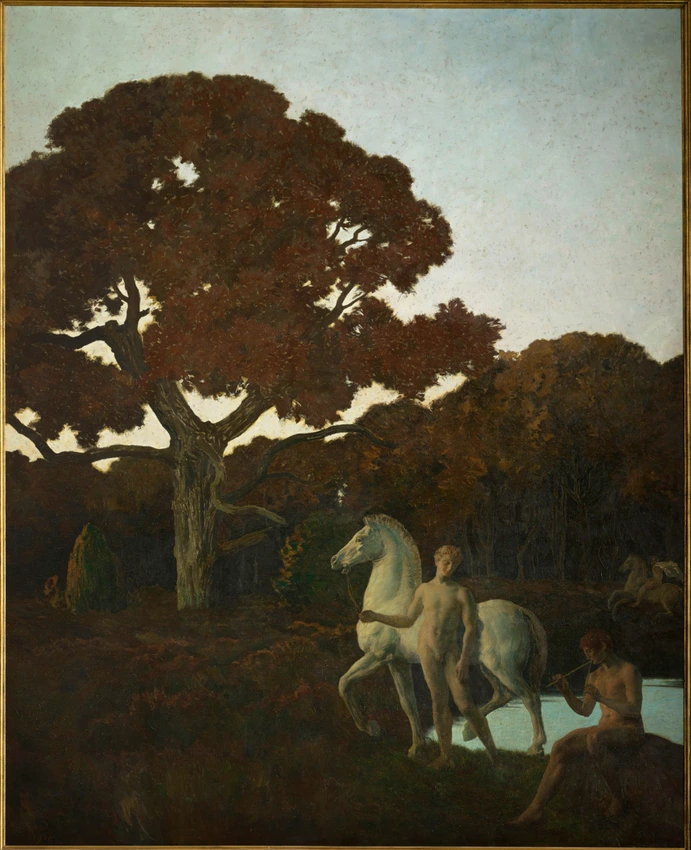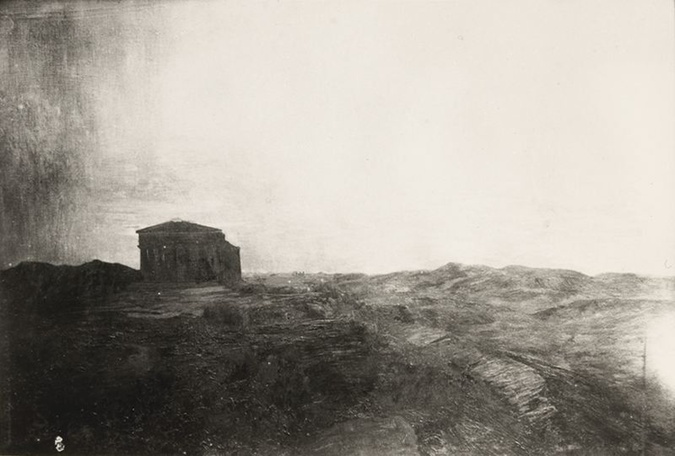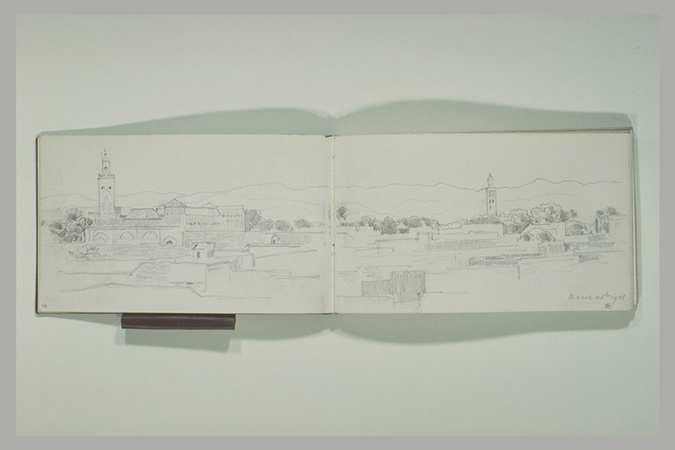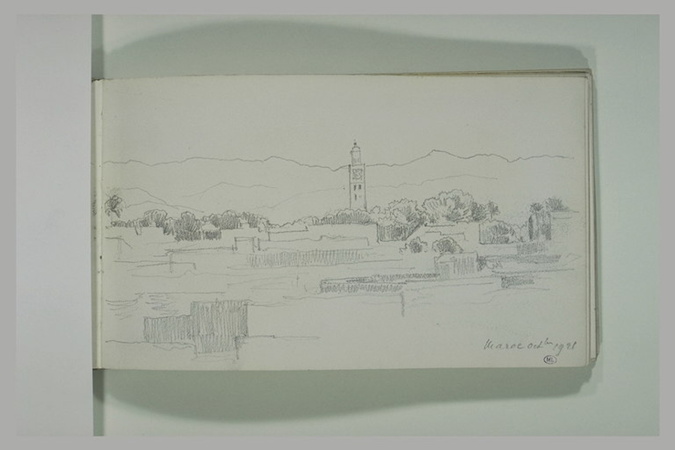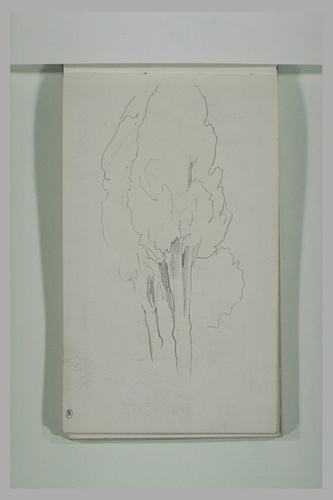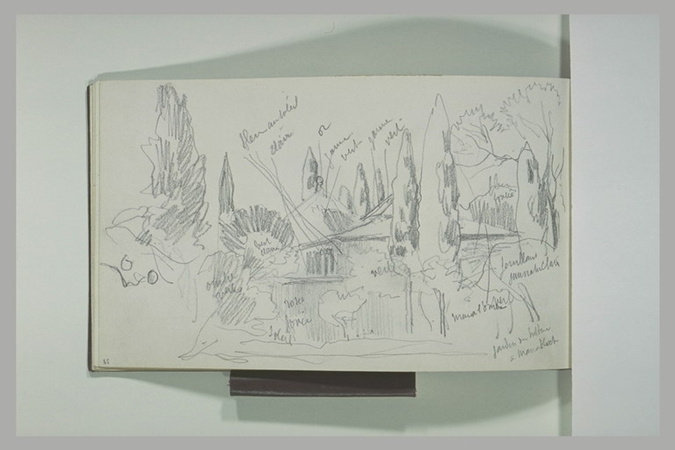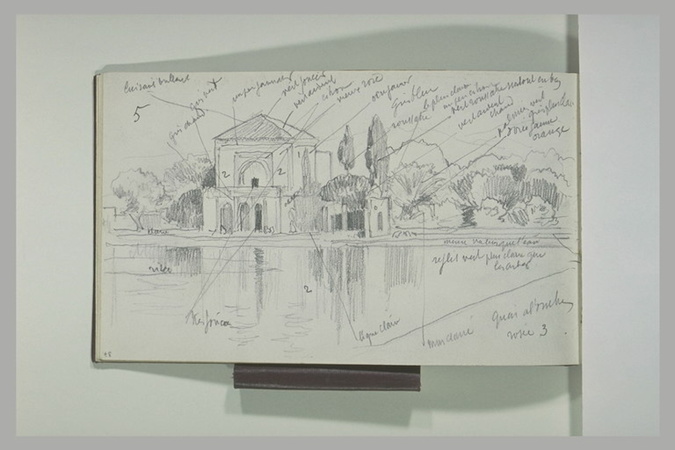L'Âge d'or (partie gauche)
Emile-René Ménard, raised to admire antique Greece, systematically drew on its literature and landscapes in the many decorative panels commissioned by the State for public monuments, after 1900. Fallen out of favour, these many lyrical scenes have often been removed from the places for which they were designed. This has allowed the Musee d'Orsay to present ten monumental paintings, executed between 1908 and 1915, for the various rooms of the Paris Law School. Among them, six paintings (in fact three diptychs called Antique Dream, The Golden Age and Pastoral Life), which were presented at the Salon of the Société Nationale des Beaux-Arts in 1909, were designed to be put on either side of the monumental doors of the Salle des Actes, where they stayed until the building was refurbished in 1970. The Golden Age, with its strong Symbolist overtones, contrasts male and female worlds transposed to an antique setting. The world of action belongs to the man, standing naked beside his horse, talking to one of his companions; in parallel is the world of thought, with a woman dressed in antique costume, sitting alone and contemplating the immense lake stretching away before her. The surrounding countryside emphasises their destiny: the woman is imprisoned in her green setting; the man is free in an open landscape dominated by the soaring symbolic oak tree on the right.
